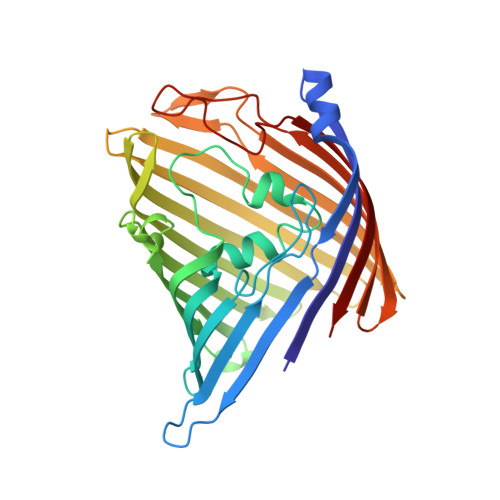Structural displacement model of chitooligosaccharide transport through chitoporin.
Sanram, S., Aunkham, A., Robinson, R., Suginta, W.(2023) J Biological Chem 299: 105000-105000
- PubMed: 37394001
- DOI: https://doi.org/10.1016/j.jbc.2023.105000
- Primary Citation of Related Structures:
7EQM, 7EQR, 7X5Q - PubMed Abstract:
VhChiP is a chitooligosaccharide-specific porin identified in the outer membrane of Vibrio campbellii type strain American Type Culture Collection BAA 1116. VhChiP contains three identical subunits, and in each subunit, the 19-amino acid N-terminal segment serves as a molecular plug (the "N-plug") that controls the closed/open dynamics of the neighboring pores. In this study, the crystal structures of VhChiP lacking the N-plug were determined in the absence and presence of chitohexaose. Binding studies of sugar-ligand interactions by single-channel recordings and isothermal microcalorimetry experiments suggested that the deletion of the N-plug peptide significantly weakened the sugar-binding affinity due to the loss of hydrogen bonds around the central affinity sites. Steered molecular dynamic simulations revealed that the movement of the sugar chain along the sugar passage triggered the ejection of the N-plug, while the H-bonds transiently formed between the reducing end GlcNAc units of the sugar chain with the N-plug peptide may help to facilitate sugar translocation. The findings enable us to propose the structural displacement model, which enables us to understand the molecular basis of chitooligosaccharide uptake by marine Vibrio bacteria.
- School of Biomolecular Science and Engineering (BSE), Vidyasirimedhi Institute of Science and Technology (VISTEC), Rayong, Thailand.
Organizational Affiliation:



















